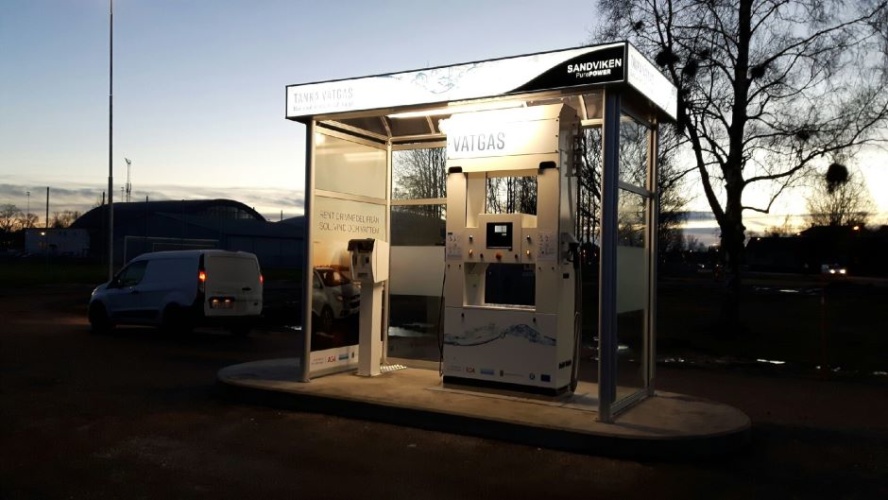Technology fanatics might recall Elon Musk’s description of fuel cell technology: “fool cells,” he called them. Yet, while the Tesla CEO’s disapproval of this method for powering EVs is clear, many automakers appear to disagree. In fact, the European Automobile Manufacturers’ Association (ACEA) has called upon policy makers to ramp-up investments in hydrogen refuelling infrastructure across the European Union (EU), a move that could positively contribute to the EU’s overall decarbonisation agenda.

Driving sustainability
The transport industry has good reason to dig deep for hydrogen technology. EVs and battery technologies are driving their own green revolution, but hydrogen shows promise where battery-based electrification may fall short.
While lighter vehicles, such as cars, can easily take advantage of ever-improving battery technologies, such solutions may be less viable for heavier transport — both in terms of charging times and the sheer weight of the batteries needed. Question marks also hang over whether charging a growing vehicle fleet will place new strains on the electrical grid.
We cannot take away from the potential of battery electric vehicles. After all, the technology will be central to initiatives such as that in the UK, which plans to ban the production of new diesel and petrol vehicles by 2035 as part of its Net Zero initiatives. Governments across the globe are right to focus on batteries as key to decarbonisation, but hydrogen makes for another obvious contender.
Energy-dense hydrogen can be used in a fuel cell, which converts energy stored in molecules into electrical energy. By using hydrogen and oxygen as power, the fuel cell produces water, electricity and heat without creating any emissions other than water vapour.
But, aside from contributing to ambitions of achieving a Net Zero footprint, hydrogen has a range of possible applications that make it a Swiss Army Knife, of sorts, among sustainable fuel technologies. One advantage is that hydrogen stations can use the renewable energy on-site to create hydrogen. This means that, as well as the process being eco-friendly, re-fuelling does not have to be connected to a wider refuelling network or grid.
Concept trucks, such as Chevrolet’s ZH2, further ignite the multifaceted potential of this fuel source. Developed in collaboration with the US military, the vehicle’s hydrogen fuel storage boasts near-silent operation, water by-product that could be collected and converted into drinking water and a mobile fuel pack that can act as a power generator to give the truck potential to become another multi-purpose defence weapon in its own right.
Poll: kickstarting the UK’s hydrogen economy
Growing a green gas giant: innovations in hydrogen production
A network of potential
There are many more tools on the “hydrogen Swiss Army Knife” besides those for the automotive industry. Investment isn’t limited to automakers, and Germany alone has recently announced a plan to spend 7 billion euros on hydrogen as part of an economic stimulus package. Meanwhile, the International Energy Agency (IEA) has called for hydrogen technologies to be rolled-out for the energy system on a global scale.
There is little to stop many countries, especially across Europe, from switching their entire gas network over to hydrogen. The switch would eliminate gas, one of the largest sources of carbon emissions, provided the hydrogen was produced using renewable resources.
If we take a look at Europe’s gas pipeline infrastructure, it’s clear that such a system would not need to be built from scratch. Belgium’s gas pipe network already consists of some 17,000 kilometres of pipework, and the country is not alone in its ownership of such a vast web of infrastructure.
The city of Leeds, UK, has the H21 project, a suite of gas industry projects that are designed to support the conversion of UK gas networks to carry hydrogen, and thus demonstrate the technical and economic feasibility of the switch. Led by Northern Gas Networks, in partnership with the global energy giant Equinor, H21 has already presented a conceptual design that would fully-convert the North of England to hydrogen by 2035.
Paving the way
Much of the infrastructure that will help hydrogen reach our homes and buildings is already beneath our feet. For hydrogen to become our main energy resource, industry and politicians must realise that it isn’t only a solution for transportation — and act on it.
There are many possibilities. Steelmakers can benefit from hydrogen-powered blast furnaces; residential properties can power ovens with hydrogen gas; and haulage trucks can run on decarbonised power. However, infrastructure needs to build on what it already has available. This involves investment in existing gas infrastructure, but also continued innovations to raise hydrogen’s availability.
Sandvik, for example, has developed the Sandvik Mobile Services Container that helps bring flexibility to those looking to invest in hydrogen technology. The service supplies coiled tubing solutions to customers on-site, using a digitally connected system to straighten and cut tubing to match the customer’s own specifications. Virtually any length can be cut, which reduces waste compared to delivering a standard tube size.
Currently, one of Sandvik’s containers has been deployed for Linde, which has built over 160 hydrogen-fuelling stations at commercial filling stations in more than 15 countries, and further stations are underway.
This is just one example of how infrastructure, and the ability to deliver parts, can scale-up hydrogen’s potential. Also, how Europe’s existing network of gas pipes, alongside current research and investment into the technology, can defy sceptics like Elon Musk. While many in the automotive industry, and beyond, believe that hydrogen fuel isn’t fool’s play, such innovations will be essential to bringing this sustainable fuel technology into the mainstream.
Mats W. Lundberg is sustainable business manager at Sandvik Materials Technology










Water Sector Talent Exodus Could Cripple The Sector
Well let´s do a little experiment. My last (10.4.25) half-yearly water/waste water bill from Severn Trent was £98.29. How much does not-for-profit Dŵr...